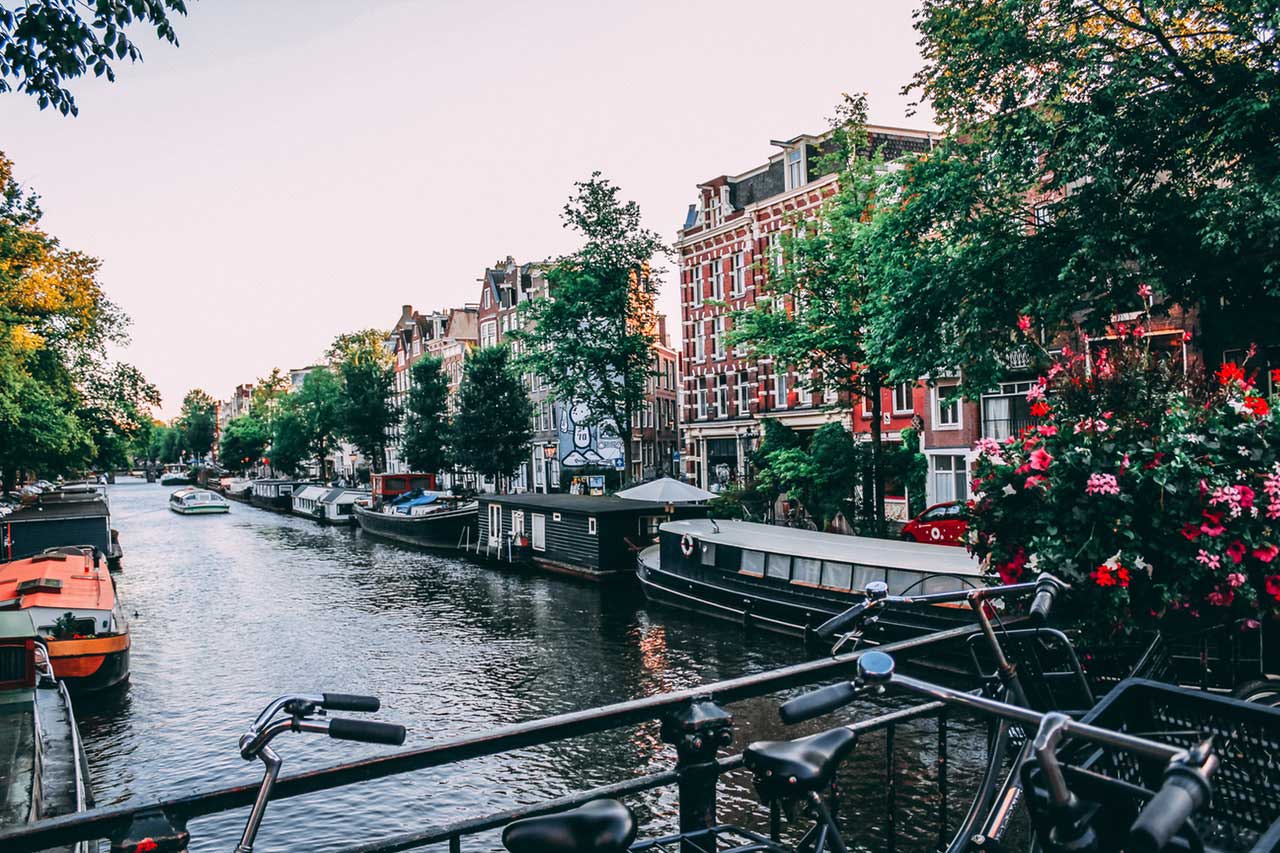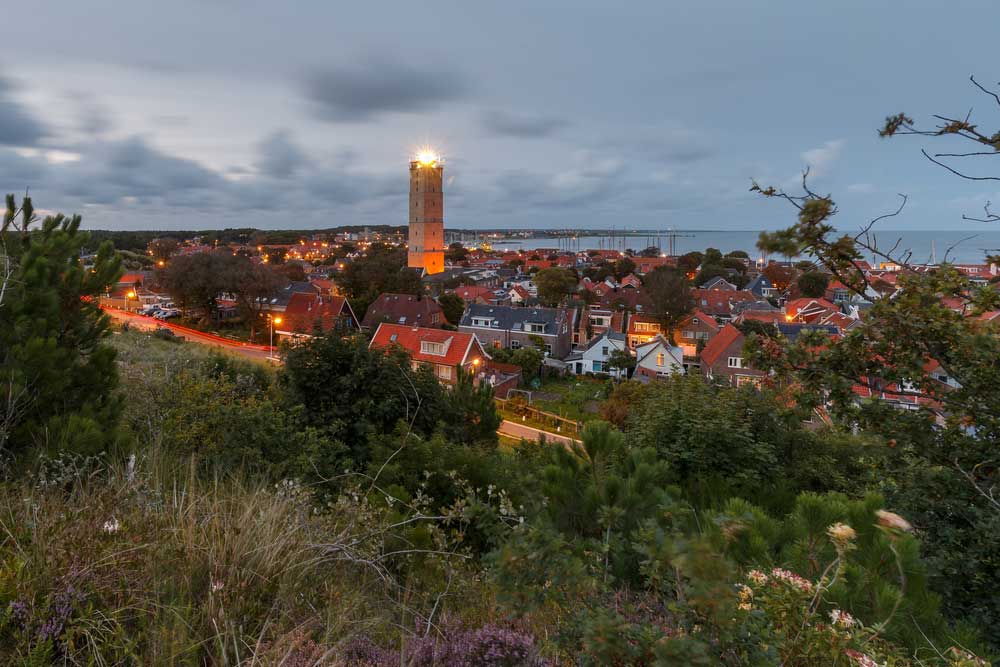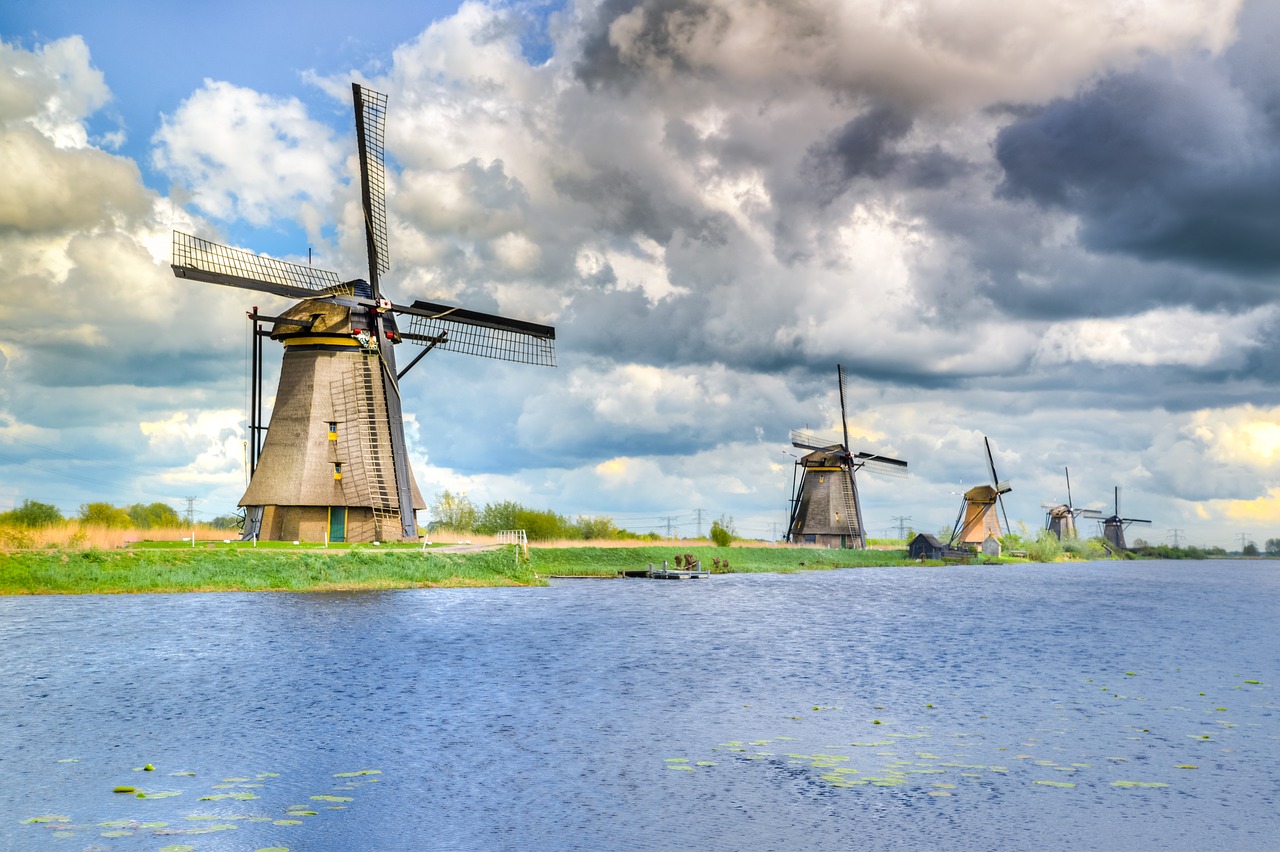The Lighthouse Tour of the Netherlands and Belgium
An opportunity for the serious enthusiast to delight in at least 16 different lighthouse visits across the Netherlands and Belgium. Marvel in the variety of the size, shape, construction and age of the lighthouses, during many internal visits, whilst meeting with the local enthusiasts in Holland.
Itinerary at a Glance
- Visit at least 16 lighthouses in 11 days
- Arrive in Amsterdam
- Free time in Amsterdam with a Dutch speciality welcome dinner
- A sightseeing tour of Amsterdam including the Scheepvaart Maritime Museum and the Rijksmuseum to view Van Gogh’s paintings
- Between Amsterdam and Harlingen visit a number of lighthouses including the Van Speyk Monument Lighthouse
- Visit Brandaris Lighthouse, the oldest in the Netherlands
- En route to Rotterdam visit Staveren, Urk and De Ven Lighthouses
- A full day excursion to the coastal city of Scheveningen and its lighthouse as well as Hoek van Holland Rear Lighthouse
- Explore the small village of Kinderdijk and its 19 windmills dating from the 1500s
- Visit the Noord Hinder Lightship and the nearby Hellevoetsluis Lighthouse
- Tour the Rotterdam Maritime Museum
- To Ouddorp to see the Westhoofd Lighthouse and then the Haamstede Lighthouse
- Stop off at the Topshuis, Neeltje Jans; the starting point of one of the greatest European engineering feats
- An excursion to view the Westkapelle Lighthouse, the Noorderhoofd Lighthouse and the secondary lights of Zoutelande
- Travel through the tunnel under the Westerschelde River, before stopping at the Nieuwe Sluis to view the black and white striped octagonal lighthouse built from cast iron in 1867 and standing 28.4 metres high
- Continue down the North Sea coast, across the Belgian border, to view the Knokke Heist Lighthouse Oostende’s Lighthouse
- Explore the beautiful medieval city of Bruges with its canals, chocolates and famous Belgian beers
- Departure flight from Amsterdam
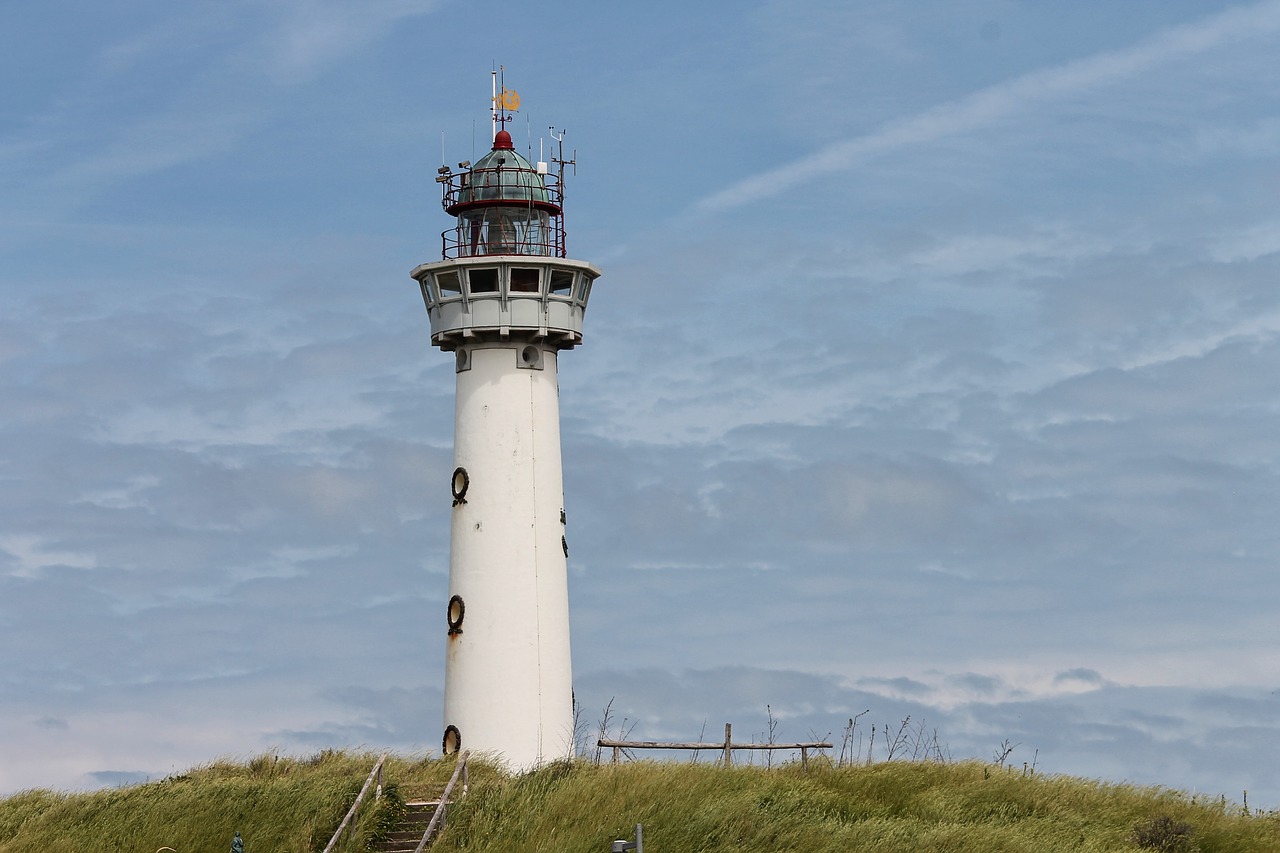
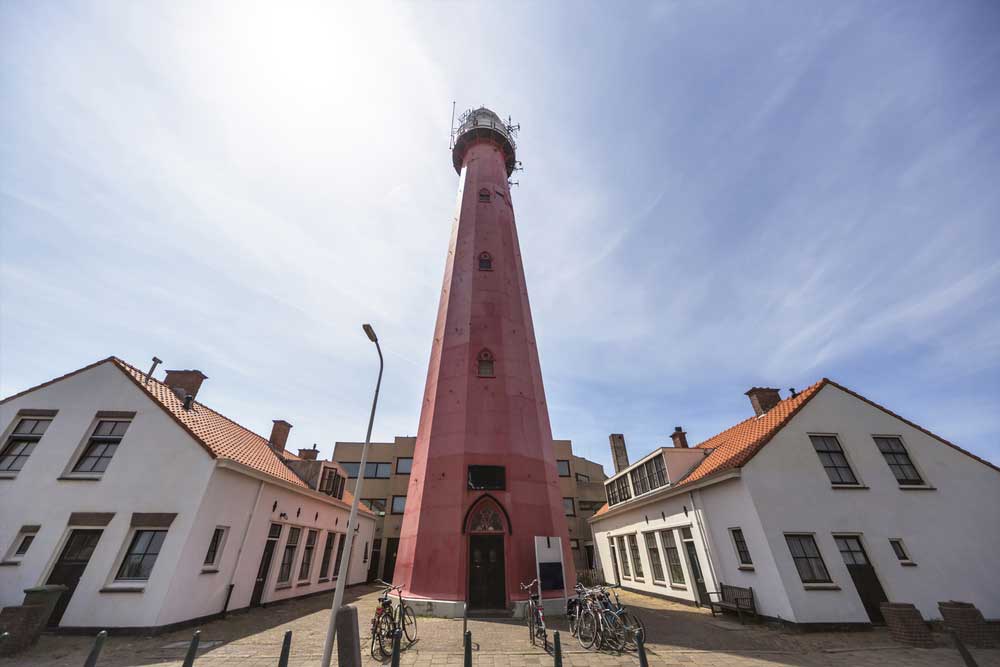
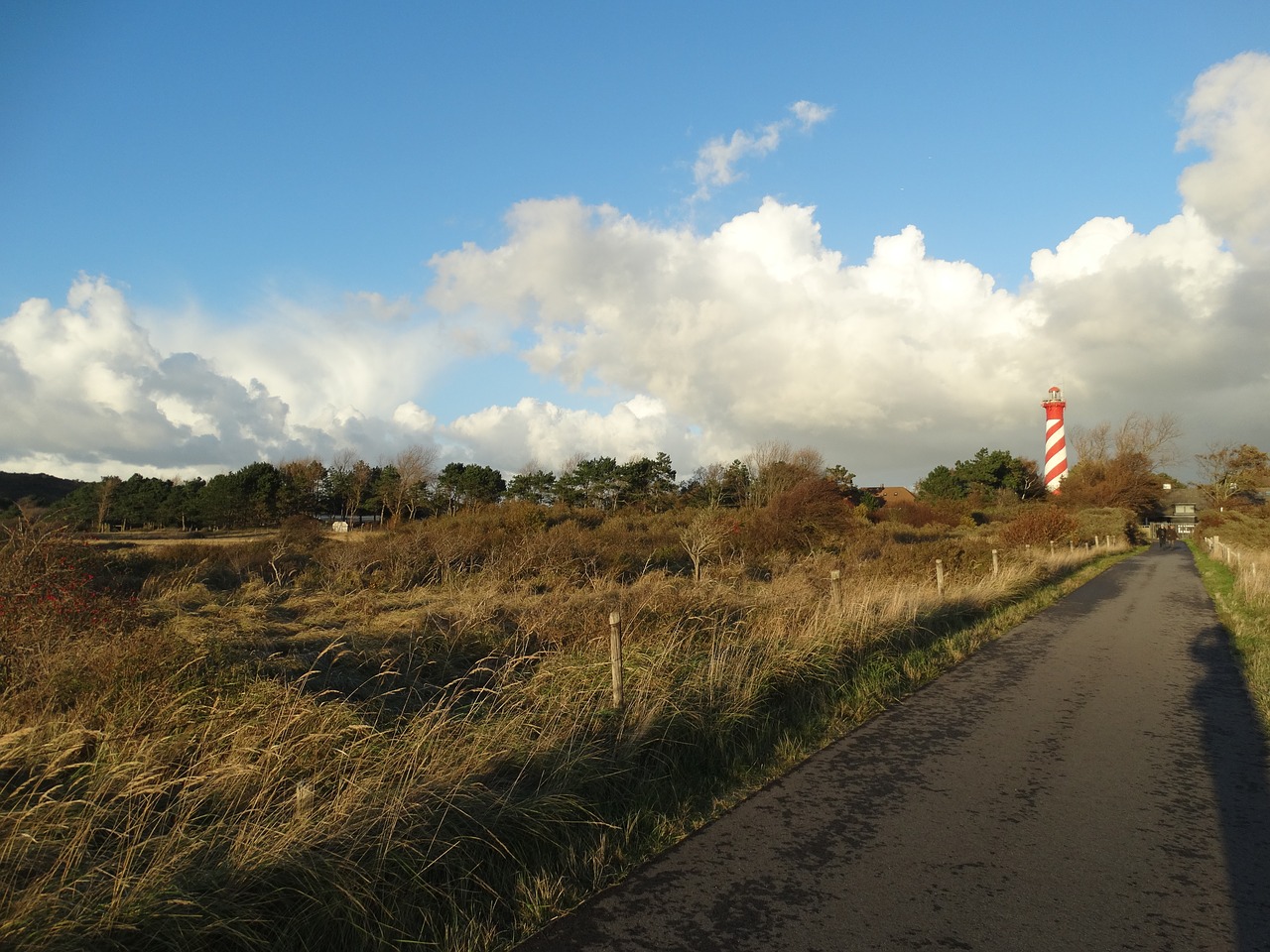
Day Two: Amsterdam
- Upon arrival at Schipol airport, Amsterdam, meet the professional tour manager and board the long distance touring coach for the trip.
- Transfer to Amsterdam city centre, with the remainder of the day free to catch up with the other group members in this truly cosmopolitan city.
- An evening welcome dinner of local Dutch specialities at the hotel.
Day Three: Amsterdam
- In the morning a half day guided coach tour of the city.
- In the afternoon more sightseeing with the tour manager, including visits to Scheepvaart Maritime Museum and the Rijksmuseum to view Van Gogh’s paintings.
- Dinner at a local restaurant with an Indonesian rice tafel menu.
Day Four: To Harlingen
- Leave Amsterdam to Harlingen, stopping en route for visits to many lighthouses:
- Ijmuiden Rear Lighthouse;a red-brown conical cast iron tower
- Ijmuiden Front Lighthouse also known as Lage Licht (low light) with a short stop to take photos of the lighthouse and the semaphore beside it
- To Egmond aan Zee for an internal visit of the Van Speyk Monument Lighthouse. Built from brick in 1834, it is 34 metres high. This lighthouse is a monument to Lieutenant Van Speyk who blew up his ship, including himself, in 1831 to escape from Belgian rebels in Antwerp Harbour
- The Lange Jaap Lighthouse near Den Helder with an internal visit, this lighthouse appears conical but has sixteen sides and was built in 1878
- The day ends with the spectacular drive to Harlingen over the Afsluitdijk, a 20 mile long dyke built in 1928 to separate the North Sea and the Ijsselmeer.
- An overnight stay in Harlingen.
Day Five: Terschelling
- Transfer to a ferry to Terschelling, one of the Fresian Islands off the north coast of the Netherlands.
- Visit Brandaris Lighthouse, the oldest lighthouse in the Netherlands, dating from 1594. The lighthouse is built from brick and stands 55.5 metres tall in the middle of the main village. It can be visited in groups of four. It is the third lighthouse on the site, the first being built in 1323.
- Time for a spot of lunch, some sightseeing and even a visit to the depot where buoys and signals are stocked and repaired.
- Return ferry departs for Harlingen followed by an evening meal at a local restaurant.
Day Six: To Rotterdam
- Travel to Rotterdam, firstly along the Lake Ijsselmeer with a stop en route at Hindeloopen, a very old, small and well conserved town.
- Visit to Staveren Lighthouse; an open iron construction with two small harbour lights in the same style.
- Urk Lighthouse; has a white conical brick tower with a red lantern built in 1844-45 and is 27 metres high.
- Visit to De Ven Lighthouse; one of three identical lights which were built to guide ships from the North Sea to Amsterdam. This is the only one still standing.
- Transfer to Rotterdam for an overnight stay.
Day Seven: Schevenigen and Hoek van Holland
- A full day excursion to the coastal city of Scheveningen.
- Visit the Scheveningen Lighthouse; a brown, 12-sided tower built in 1875 from cast iron and standing 49 metres high. Inside there is a small collection of old technical materials from lighthouses.
- Lunch at one of the many local fish restaurants in Scheveningen in the nearby fisherman’s port.
- Continue to the Old Hoek van Holland Rear Lighthouse, a red conical cast iron tower. Inside it is completely filled with lenses, bulbs and other technical materials. There is a great view from the lighthouse of one of the six octagonal concrete towers of the light range, now marking the entrance to the Rotterdam port. Some of the other range lights can be seen as well.
- On the return journey view the immense storm protection gates; two iron gates of about 1000 feet each that close the river entrance when a combination of high tide and storm from the north-west pose a danger for Rotterdam.
- An overnight stay in Rotterdam.
Day Eight: Kinderdijk and Hellevoetsluis
- A morning departure for Kinderdijk, a small village, unique for its 19 windmills dating from the 1500s. The mills drain the excess water from the Alblasserwaard polders, situated below sea-level, after which the water is sluiced into the river Lek. The powerful mill sails served to transmit the force of the wind on to large paddle-wheels, which scooped up the water. Nowadays power-driven pumping engines do the job, including one of the largest water screw pumping-stations in Europe In 1997 the mills of Kinderdijk were put on the UNESCO’s World Heritage List.
- Continue on to Hellevoetsluis, to visit the Noord Hinder Lightship built in 1951 in the Dutch town of Zaltbommel, it is now a floating museum. View the nearby Hellevoetsluis Lighthouse, a white cylindrical tower.
- Return to Rotterdam and a visit to the Maritime Museum with exhibitions on Worldport Rotterdam, inland shipping and some famous name Dutch shipping lines.
- Evening dinner and an overnight stay in Rotterdam.
Day Nine: Ouddorp and Middelburg
- The first stop of the day is at Ouddorp to see the Westhoofd Lighthouse, a square, brick tower 52 metres high.
- Then continuing on to view the Haamstede Lighthouse, also known as Wester-Schouwen Lighthouse. Built in 1837 and 50 metres high it is a conical, stone tower with red and white diagonal ‘barber pole’ style stripes.
- Stop at Topshuis, Neeltje Jans; the starting point of one of the greatest European engineering feats. A mile-long construction, usually open to let the tide in and out, but closed during dangerous weather conditions, protecting the coastline from disastrous tidal surges.
Day Ten: Middelburg
- An excursion to the coast to view the Westkapelle Lighthouse. A most unusual lighthouse in that the lantern is on top of a church building at 37 metres high.
- Whilst at Westkapelle, view the Noorderhoofd Lighthouse, a red tower with a white strip, which is the oldest steel lighthouse and the first steel one in the Netherlands, standing 11.5 metres high.
- Short stops at the secondary lights of Zoutelande, which now has a red light aligned with the light at Westkapelle to help sailors navigate the channel.
- Then on past Kaapduinen and Vlissingen.
- An overnight stay in Middleburg.
Day Eleven: To Bruges
- Depart the hotel and travel through the tunnel under the Westerschelde River, before stopping at the Nieuwe Sluis to view the black and white striped octagonal lighthouse built from cast iron in 1867 and standing 28.4 metres high.
- Continue down the North Sea coast, across the Belgian border, to view the Knokke Heist Lighthouse the first reinforced concrete lighthouse on the Belgian coast dating from 1907. Travel along the coast to Blankenberge to view the more modern lighthouse built in 1952.
- The final stop of the day is in Oostende to see the lighthouse there; a conical,white tower with octagonal lower portion, blue stripes on upper portion.
- Continue to the beautiful medieval city of Bruges with its canals, chocolates and famous Belgian beers.
- An overnight stay in Bruges.
Day Twelve: Bruges and then to Amsterdam
- A morning orientation tour, including canal cruise in Bruges to see the heart of this medieval city.
- After free time and sightseeing, depart Bruges for return to Amsterdam and departure flight home.
